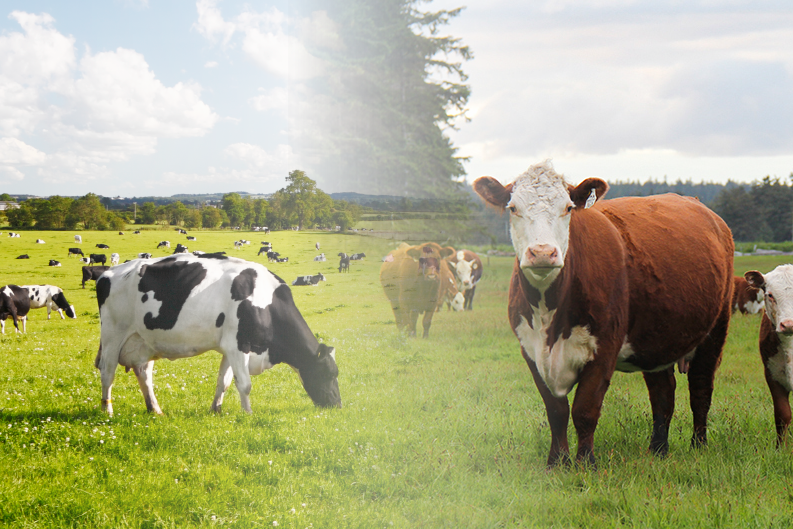Dairy & Beef Specialists,
Grand Valley Fortifiers
While the dairy-beef cross presents a great opportunity for producers, there are some considerations which they should consider to make sure that they are getting the most out of the crossbred calves, while also providing a quality product for the next person in the supply chain. The three most important things for dairy producers to think about when it comes to the dairy-beef cross include the marketing and end user, breeding and genetics, and management of the calves. The first decision which needs to be considered is what the marketing strategy and who the next user of the calf is. There are many options that producers can choose from to market their crossbred calves. The first is to sell the calf at a few days old either directly to another producer or through an auction mart. Marketing calves through an auction mart can be helpful for determining a price while marketing directly to another producer gives the opportunity to develop a breeding and management program that calf buyers could be willing to pay a premium for. A second option is to raise the calves to a point where they are weaned and can be sold to a cattle feeder to go directly onto feed. This can give dairy producers an opportunity to raise the calf through the most vulnerable period of life and sell a larger calf at 200+ lbs. A third option producers have is to raise the crossbred calves to up to a finished weight and market them as finished beef either through an auction mart, directly to a harvest facility or sell freezer beef. When doing this, producers are able to produce a finished animal and capture the full margin of feeding the calves. Producers who choose this route should think about the feed and barn space they have available, the labour required and what nearby markets are easily accessible.
When considering which beef bulls to use on dairy cows producers should keep in mind the characteristics which will provide the highest value of a finished beef animal. The preferred beef traits are a black hided, polled steer with similar yield and grade to a conventional type beef animal. Some of the breeds to consider can include Angus, Simmental, Limousin, Hereford and Charolais, keeping in mind that there is almost as much genetic variability within the breeds as there is across the breeds. Some expected progeny differences (EPD’s) to look at in selecting a sire are calving ease, hip height, carcass weight, rib eye area and marbling. When crossbreeding Holsteins which have a large frame we are trying to get a smaller framed calf with a more moderate rib eye area and higher marbling quality, whereas in breeds like Jerseys which marble very well we are focusing more on getting a higher yielding carcass with a larger rib eye area. In instances where producers are marketing calves directly to another farmer it would be worthwhile to work with them to select sires which have the best characteristics for them, otherwise it is good to work with a specialist to determine which sires will work best on their farm. With respect to managing the calves it is important to keep in mind what will provide value for the next user. Proper management of the calves will lead to less disease issues and will help the calf transition onto feed as seamless as possible. Early life care and management needs to be similar to what producers are already doing for dairy heifer calves. Calves should get a proper amount of colostrum as quickly as possible, separated from the cow and administered any vaccines. They should also be castrated and dehorned within a few weeks of birth. Calves can be fed a milk replacer or whole milk in a similar program to dairy heifer calves. Beef crossbred calves should begin to be weaned at 40 days old and should be completely weaned at 60 days. Following weaning, the dairybeef crossbred calves should be fed a calf ration with adequate fibre and protein levels up to 300 lbs body weight at which point they can then be transitioned to a more typical beef feeding program. It is important to communicate with the next user, veterinarian, and nutritionist to develop a management and feeding program that is the best fit for your farm.
Overall using beef on dairy is an exciting opportunity for producers to reap the benefits of what could be considered a by-product of producing milk. However, producers should make sure to look at how they are marketing their calves, which sires they are using, and how they are managing the calves. By evaluating what they are currently doing producers can make changes to develop a program that will provide a quality product for the next user and generate the best return for their calves.
This article was written for the Winter 2022 Dairy Eastern Dairy Grist. To read the whole Dairy Grist, click the button below.

